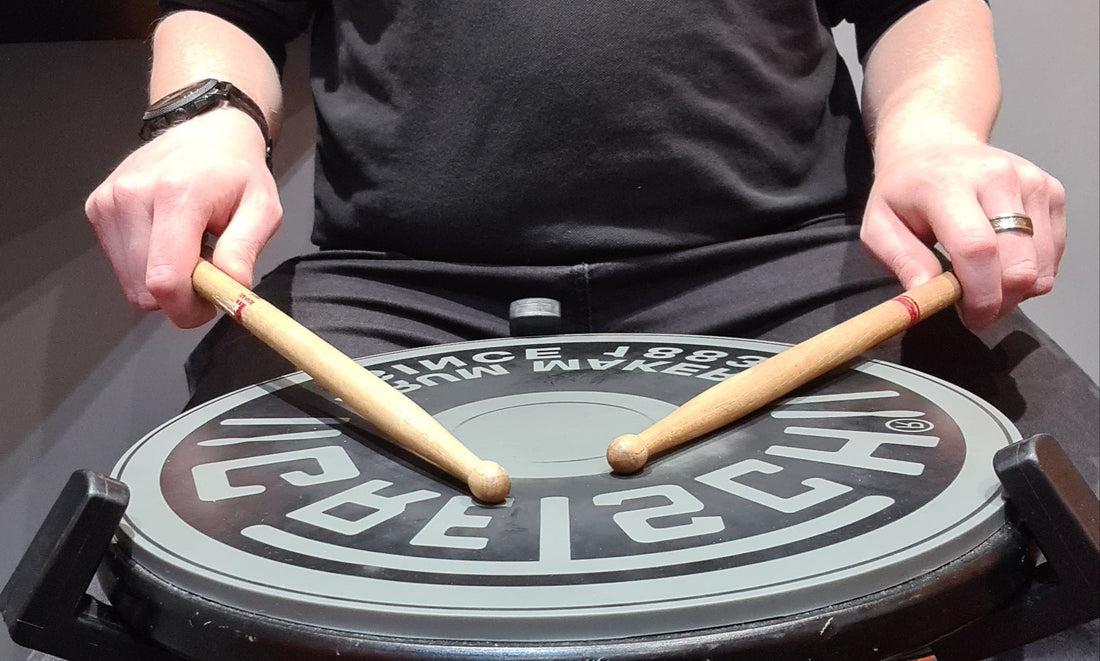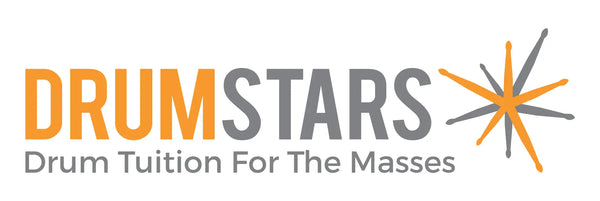
Matched Grip or Traditional Grip How-to: Hold your drumsticks correctly
Share
“Am I holding the drumsticks correctly?”… “Should I use matched or traditional grip?”… “How do I play French, American or German Grip?”
Wow! No wonder it’s so confusing for a beginner drummer!

Don’t worry though, in this article I’m going to discuss both styles, but ultimately what I feel is the most important things to consider when holding your sticks.
As a tutor, I feel its important to teach the students how to hold the sticks correctly from Lesson 1 and tap out some basic hand patterns on a practice pad or snare drum. This way, we can get a feel for the grip and try to prevent any bad habits forming from the start, and ensure they get the most control out of their drum stick without causing any injury in the long term. Even if I have a student who has recently joined us and has had previous experience in drumming, i will always pay attention to how they hold the sticks and give advice on how to adjust their grip, so they can improve their performance.
Usually I would start with Matched Grip for beginners, as its the most common and easiest style to learn, and can help you to develop control and power with the sticks pretty quickly. This refers to a grip which is symmetrical in both hands. I like to make sure that my thumb is up against the stick and is resting in the first crevice of my index finger, whilst allowing a gap for the stick to pivot in between the index finger and thumb. The back of the hand should be facing towards the ceiling and the knuckle of your index finger should be the highest part of each hand. 
The other common style is Traditional grip or Jazz grip as its less commonly known. Traditional grip is a technique where each hand holds the stick differently. Usually the right hand uses a overhand grip exactly like matched grip, however the left hand uses a underhand grip. The name of this style originates from military marching drummers, who play a snare slung around the neck or over the shoulder with a strap.


Although today there are many adaptations to marching drums so that they are more horizontal, originally the drums naturally hung side ways with a slight tilt, close to the hip, dubbing the snare drum “The Side Drum”. Playing with this type of grip meant that drummers could play the drum comfortably without their elbows sticking out or knocking the drum with their knee or thighs when marching. The style ended up being incorporated into early Jazz drum kit playing, and is most commonly used in this genre, although it is also used by several Rock drummers.

In order to play any style efficiently we need to understand what a Fulcrum is. I find the best way to explain this is to take you back to the playground or your local park.
Remember the Seesaw? That long, narrow board looking thing, in array of bright colours that goes up on one end, when the other end goes down? Yes thats the one! Well just like a seesaw, we are trying to create a balance point on the stick with our thumb and first or middle finger, so that when we strike our drum, we get a rebound from the tip of the stick, and at faster speeds we can use our fingers at the butt end of the stick like a lever to push the stick back towards the drum head.
Another point to note is we want to AVOID the “Death Grip” at all costs. This is where we lock the wrists and fingers really tight, so that it gives little to no room for the drumsticks to pivot in your thumb and fingers. If we do this over a long periods of time, it can cause us issues in the future such as Tendonitis or Carpal Tunnel Syndrome.
The idea is to hold the sticks loose enough so that you don’t drop the stick, but allow it to bounce and rebound straight back to you. You have probably heard the term “Let the sticks do the work”, and this exactly what your drum teacher is referring to. We do this by flicking the wrist, and allowing the stick to pivot freely, and then guide the stick back down to the drum.

Think of it a little bit like bouncing a Basket ball. You’d guide the ball to the floor by hitting the top of the ball with a certain amount of force, and wait for it to bounce right back to your hand. The more force you put on the ball the more responsive the rebound will be.
Ok so now we have covered the basics on how to hold the sticks, and get the most efficient rebound stroke. Remember, everyone is different and the way you hold the sticks may look slightly different to another person holding their sticks. This can be down to the type of sticks they are using as well as the size of their hands, and may also be playing a slight variation of a matched grip style (I.e American, French or German), so try and experiment and see what works best for you.
In my opinion, i really don’t think it matters whether you decide to play Matched or Traditional grip, as long as you do it well. Both styles are great for a whole range of music genres and with the right control and technique you can achieve great results regardless. The main thing is to ensure you have soft hands and have developed the fulcrum in each hand, so that you can play around the kit with total control, speed and power when required.
If you would more info on this, please do not hesitate to Contact us.
